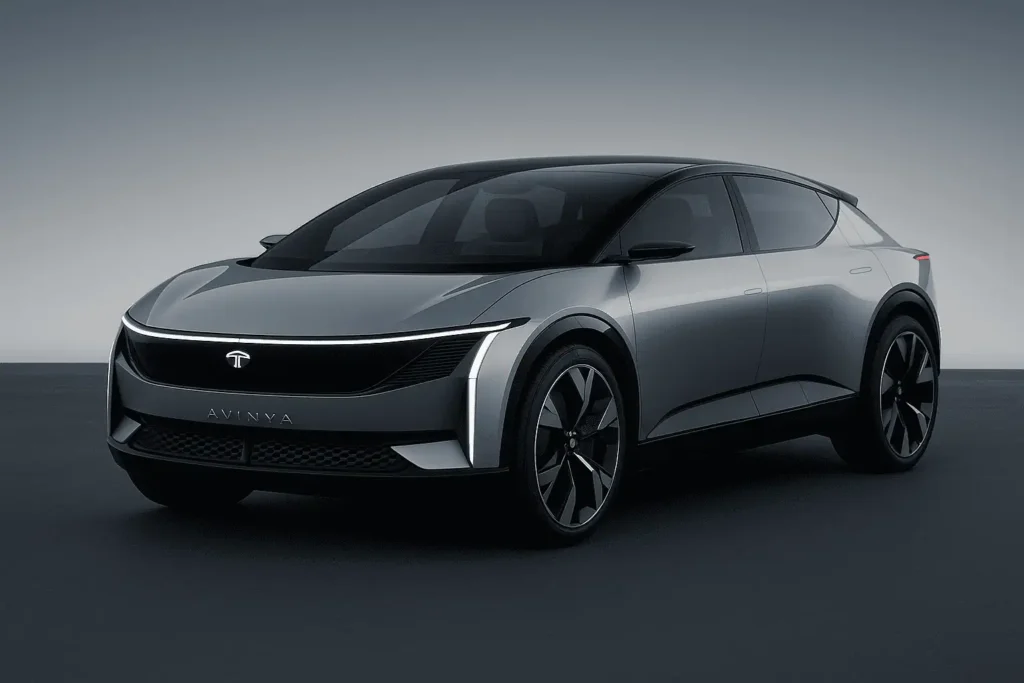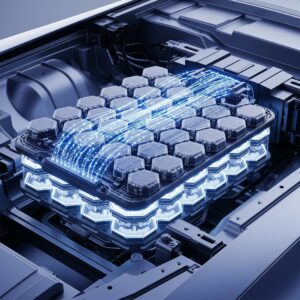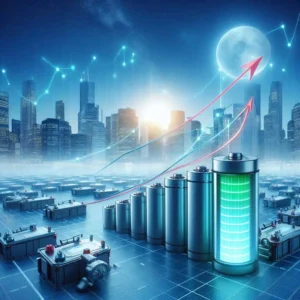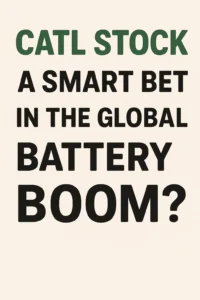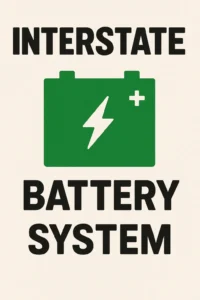The Tata Avinya represents a bold leap into the future of electric mobility, combining cutting-edge technology, sustainable design, and a vision for global leadership. Here’s an in-depth analysis of its key features, technological advancements, and strategic positioning:
1. Design & Innovation: Redefining Automotive Aesthetics
The Avinya Concept breaks free from traditional automotive design with a catamaran-inspired silhouette, blending elements of a premium hatchback, SUV, and MPV into a cohesive, futuristic form13. Key highlights include:
- Butterfly Doors: Facilitating easy entry/exit while eliminating B-pillars for a spacious cabin13.
- Screen-Less Interior: A minimalist approach replaces traditional infotainment screens with a voice-activated soundbar and steering wheel-mounted displays, prioritizing mental tranquility136.
- Sustainable Materials: Recycled fabrics and mineral waste composites underscore Tata’s commitment to eco-conscious luxury13.
The updated Avinya X concept (2025 Auto Expo) shifts toward a luxury SUV design, featuring Matrix LED headlights, hidden rear door handles, and a coupe-like roofline45.
2. Technical Prowess: GEN 3 Architecture & Performance
At its core, the Avinya leverages Tata’s GEN 3 EV architecture, engineered in India for global markets. This platform emphasizes:
- Ultra-Fast Charging: A 500+ km range in under 30 minutes, supported by next-gen battery technology18.
- Agile Performance: Lightweight materials and optimized powertrain design enhance efficiency and durability, even on rugged terrains16.
- Advanced Safety: High structural integrity, waterproofing, and dust resistance ensure reliability across diverse conditions16.
Collaboration with Jaguar Land Rover (JLR) via the EMA platform further elevates its credentials, integrating cell-to-pack battery systems and advanced driver-assistance features59.
3. Sustainability & Wellness: Beyond Zero Emissions
Tata’s vision extends beyond electrification to holistic well-being:
- Vegan Interiors: Leather-free upholstery and solar roof integration reduce environmental impact18.
- Aroma Diffusers & Skydome Roof: Enhance cabin ambiance with natural light and calming scents13.
- 95% Recyclable Battery: Aligns with global circular economy goals15.
4. Strategic Roadmap: Production & Market Positioning
- Launch Timeline: The first Avinya model (P1) is expected by 2026, with subsequent variants (P2-P5) targeting luxury segments akin to Range Rover models59.
- Global Ambitions: Produced at Tata’s Ranipet facility (Tamil Nadu), the Avinya lineup will share JLR’s EMA platform, positioning India as a hub for premium EV manufacturing59.
- Price Range: Estimated at ₹25–35 lakh+ (~30,000–30,000–42,000), targeting premium buyers while emphasizing affordability68.
5. Competitive Edge: Challenging Global Giants
The Avinya aims to disrupt the EV market by addressing critical pain points:
- Range Anxiety: 500+ km range rivals Tesla and Hyundai8.
- Charging Infrastructure: Compatibility with global fast-charging standards ensures practicality13.
- Cultural Resonance: “Make in India” ethos combined with Sanskrit-inspired branding appeals to both domestic pride and international curiosity8.
Challenges & Future Prospects
- Production Scalability: Transitioning from concept to mass production by 2026–2027 remains a critical hurdle19.
- Market Competition: Must contend with established players like Tesla, BYD, and Mahindra’s XUV.e959.
- Technological Evolution: Innovations like solid-state batteries and AI-driven energy management could further enhance its appeal58.
🚀 What Makes the Tata Avinya Special?
1. A Futuristic Design Inspired by Nature
- “Butterfly Doors” for easy entry/exit
- Minimalist, lounge-like cabin (no traditional dashboard)
- Sustainable materials (recycled fabrics, eco-friendly trim)
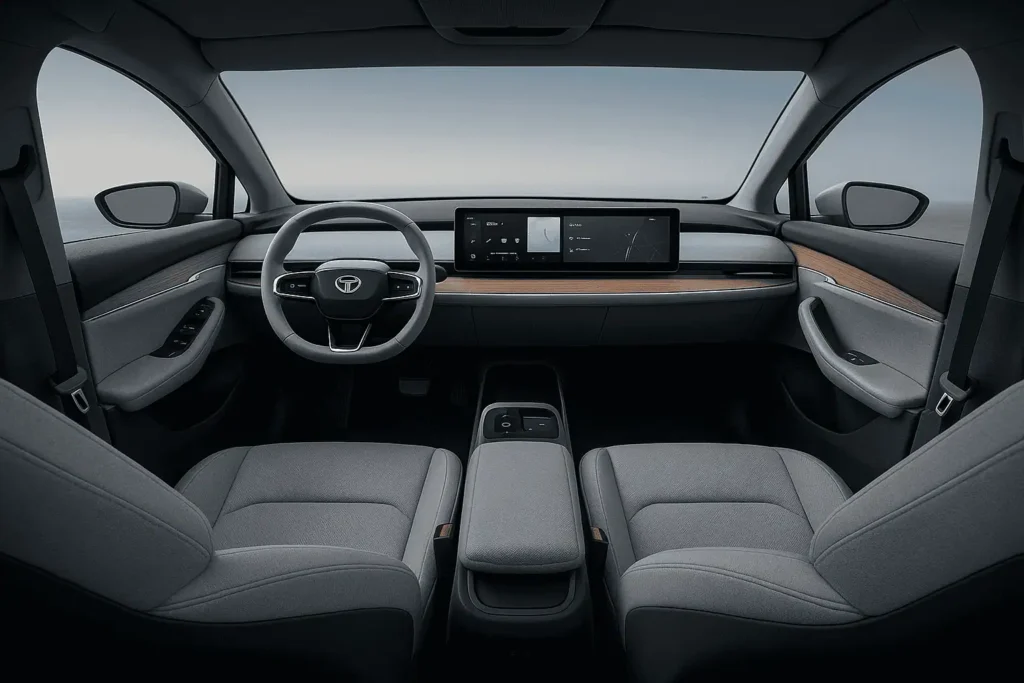
2. Next-Gen Electric Platform (Born Electric Vehicle – BEV)
- Ultra-fast charging (0-80% in under 30 mins)
- 500+ km range (Gen 3 battery tech)
- Lightweight architecture with optimized aerodynamics
💡 Why It Matters?
This isn’t just another EV—it’s a mobility experience prioritizing comfort and sustainability.
🔋 Battery & Powertrain: What We Know
| Feature | Specification |
|---|---|
| Battery Type | Lithium-ion (likely LFP for cost & safety) |
| Charging | 800V ultra-fast charging (compatible with global standards) |
| Power | Expected 300+ HP (dual-motor AWD option) |
| Platform | Modular skateboard design (shared with future Tata EVs) |
📌 Note: Tata hasn’t confirmed full specs yet, but industry experts predict **solid-state battery readiness by 2027-28*.
🌿 Sustainability at Its Core
✅ Vegan interiors (no leather, recycled fibers)
✅ Solar roof for auxiliary power
✅ 95% recyclable battery (aligned with EU Green Deal)
🌍 Big Picture: The Avinya aligns with Tata’s net-zero pledge by 2045.
🛠️ Expected Production Timeline
📅 2025: Final design freeze
📅 2026: Pre-orders open (India & Europe first)
📅 2027: Mass production begins
💰 Estimated Price: ₹25-30 lakh (~30,000–30,000–36,000)
🔍 How Does It Compare to Global EVs?
| Model | Range | Charging Speed | Unique Selling Point |
|---|---|---|---|
| Tata Avinya | 500+ km | 30 mins (10-80%) | Spacious lounge cabin |
| Tesla Model Y | 530 km | 25 mins (Supercharger) | Autopilot tech |
| BYD Seal | 570 km | 26 mins | Blade battery safety |
🔎 Key Takeaway: The Avinya competes on space & comfort, not just specs.
Conclusion: A Paradigm Shift in Mobility
The Tata Avinya is more than an EV—it’s a manifesto for sustainable innovation, blending Indian ingenuity with global aspirations. By prioritizing wellness, performance, and accessibility, Tata Motors is poised to redefine electric mobility, challenging Western dominance and setting new benchmarks for the industry.
For further details, explore:
This synthesis of design, technology, and strategy positions the Avinya as a cornerstone of India’s electric future. ⚡
🏆 Electrolyte FAQs
Q: Can you make batteries without electrolytes?
A: No – they’re essential for ion movement. Even “dry” batteries contain solid electrolytes.
Q: Why don’t we use water-based electrolytes everywhere?
A: Water breaks down at high voltages (limited to ~1.5V cells).
Q: When will solid-state batteries hit the market?
A: Toyota plans limited production in 2025-2027.
💬 Your Turn!
- 🔌 “Would you pre-order the Avinya?”
- 🚗 “What’s your favorite feature?”
- 🌎 “Can Tata challenge Tesla globally?”
Comment below!

